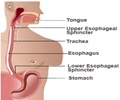Pi-deficiency in traditional Chinese medicine (TCM) is one of the most common digestive diseases and usually the equilibrium of gastrointestinal microflora are broken, which plays many important roles in the growth, development and performance of the host. Therefore, more clinical interests are arising in monitoring changes of intestinal microflora in intestinal disease and the consequent treatment, especially in TCM therapies. It has been found that some Chinese materia medica have curative effects on regulating the equilibrium of intestinal microflora and therefore promote the recovery of 'Pi'.
However, ways of monitoring the intestinal flora are quite limited, not only because of the complexity of its constitution, but also the difficulty of culturing for most gastrointestinal bacteria in vitro.A research article to be published on May 14, 2009 in the World Journal of Gastroenterology addresses this question. The research team led by Prof. Li from School of Pharmacy of Shanghai Jiao Tong University, China, used enterobacterial repetitive intergenic consensus-PCR (ERIC-PCR), which is a PCR-based molecular method, and utilizes oligonuleotides targeting short repetitive sequences ERIC which are dispersed throughout various bacterial genomes, to study changes of intestinal microflora under Pi-deficiency state and evaluate therapeutic effects of Chinese materia medica.
ERIC-PCR have implications in monitoring the effects of various known factors on the complex intestinal microflora community. The article introduced it to examine the changes of intestinal mircoflora of Pi-deficiency disorder with two animal models. They further evaluate the efficacy of four Chinese materia medicas as well as a probiotic and another disease therapy recipe in Pi-deficient rats, and determine if it could be utilized as an initial screening of changes of the composition of bacterial communities.
A molecular marker was identified for Pi-deficiency in rats. The pharmacodynamic evaluating system, including identified molecular markers (net integral area and abundance of DNA band), Shannon's index for diversity of intestinal microflora, and Sorenson's pairwise similarity coefficient, was established. With application of this evaluating system, four major clinical recipes used for Pi-deficiency therapy in TCM were demonstrated to produce more pronounced recovery activities on the Pi-deficient rats, especially the middle dose (equivalence to the clinical dose), while the higher doses of these recipes did not show a better therapeutic effect even showed some perturbation deterioration of intestinal microflora.
Both the fingerprint analysis and the identified marker were demonstrated to distinguish the Pi-deficiency. The identified molecular marker may have application in the screening of active compounds in relative Chinese materia medicas and pharmacodynamic study in Pi-deficiency.
Source-Eurekalert
LIN







